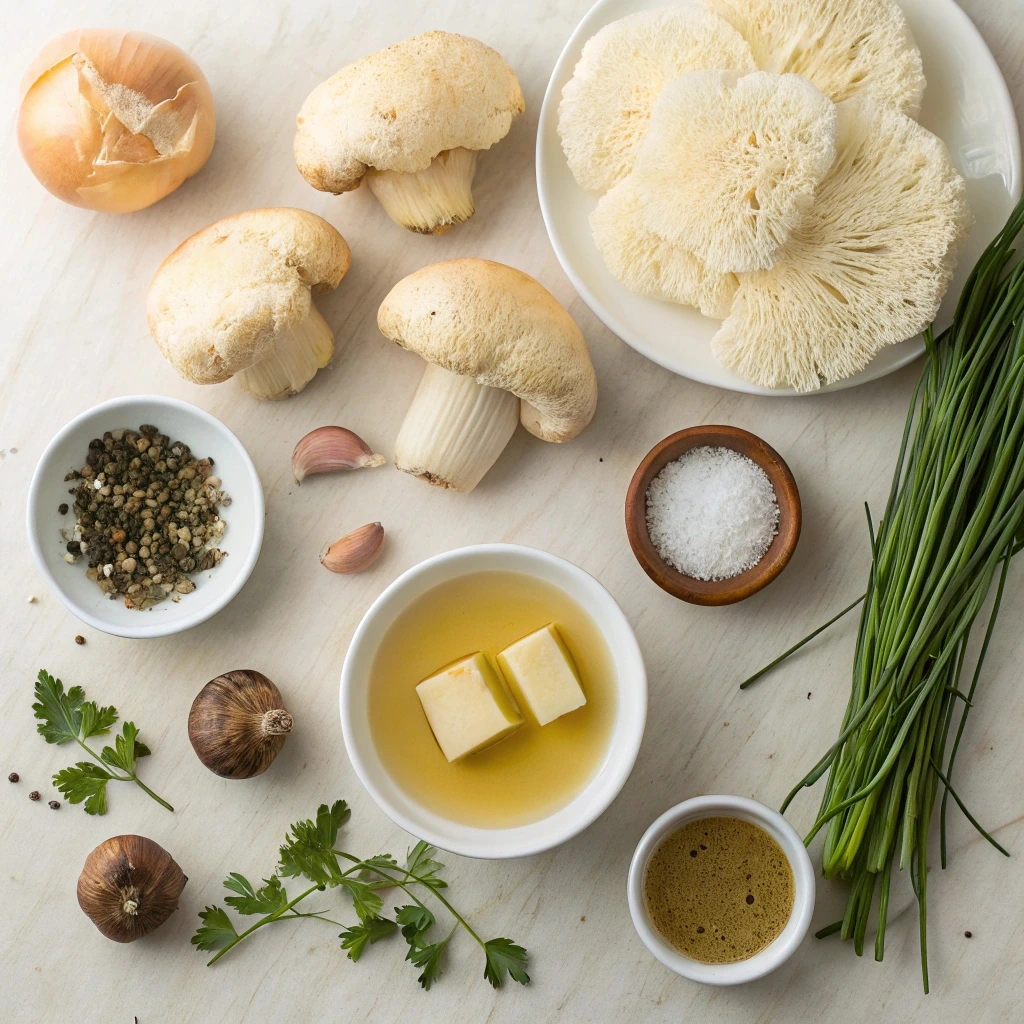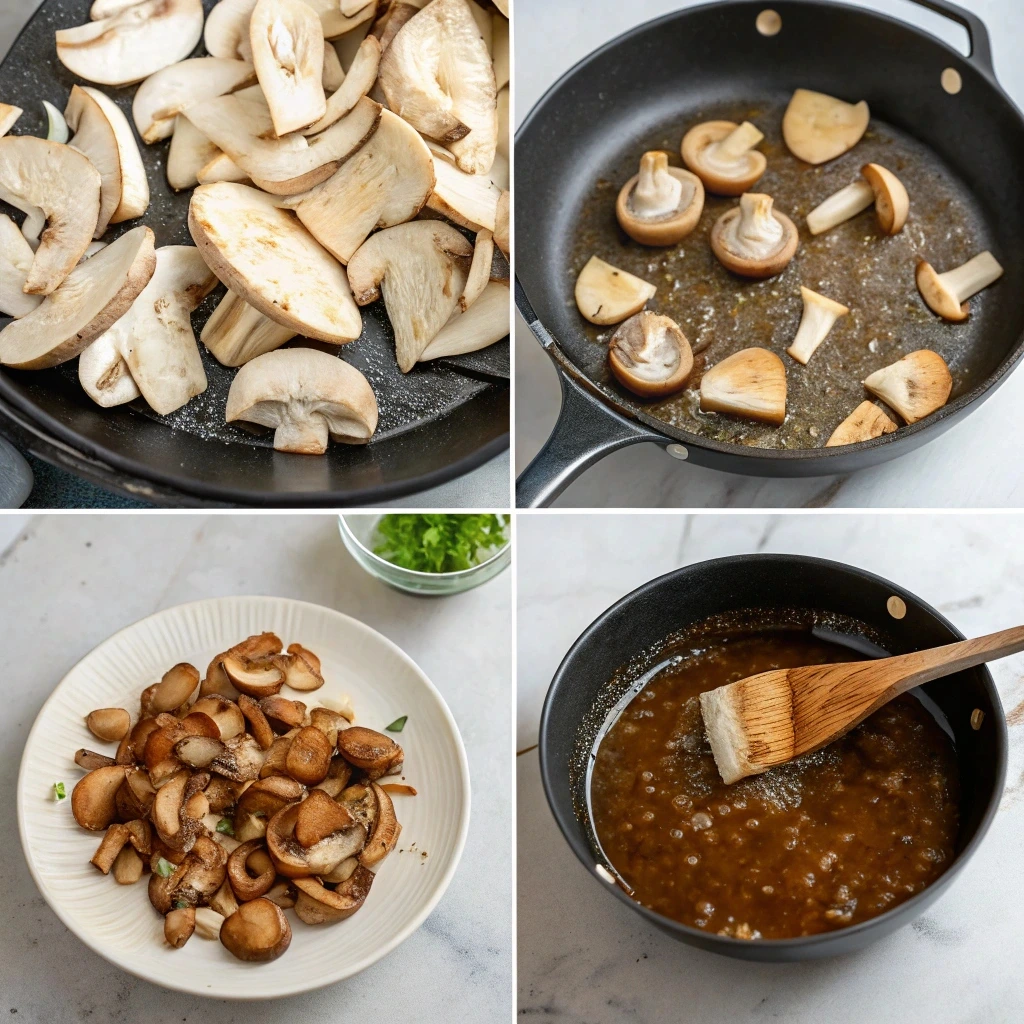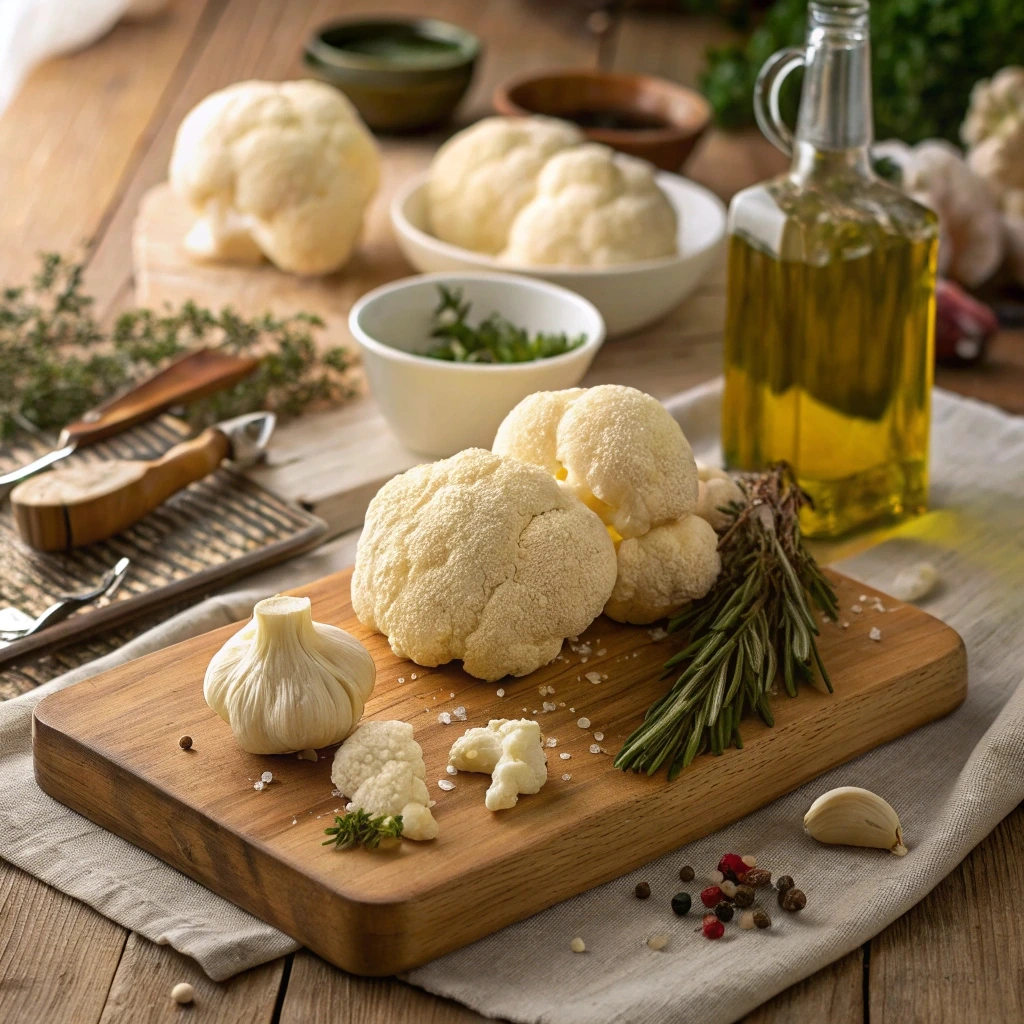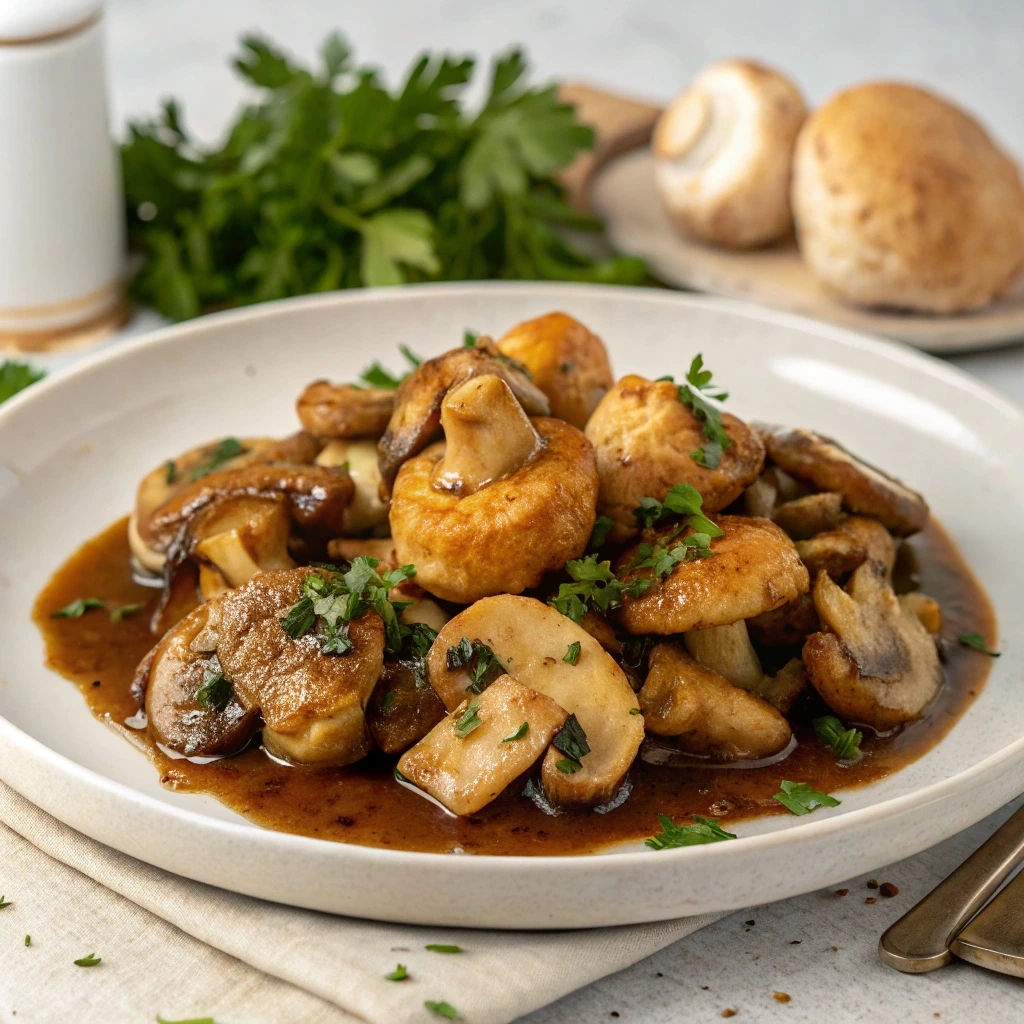If you’re on the hunt for a dish that’s equal parts healthy, flavorful, and impressive enough to wow your dinner guests — you’re in the right place. This guide unpacks everything you need to know about Lion’s Mane Mushroom Recipe — from picking the freshest fungi to cooking it up into golden, meaty perfection.
We’ll cover what this fascinating mushroom is all about, how to prep and store it, the best ways to cook it, and even how to turn it into tacos, burgers, or a rich pasta dish. Plus, we’ve packed in tips for storing leftovers, alternative cooking methods, and answers to some burning questions folks often search for — all tailored to help you master your next Lion’s Mane Mushroom recipe.
So, whether you’re a fungi fanatic or just curious about this fluffy little mushroom with a name like a jungle king, let’s dig in.
Table of Contents
What is Lion’s Mane Mushroom Recipe?
Identifying Lion’s Mane: Appearance, Names & Origins
Let’s start with the basics. Lion’s Mane Mushroom Recipe, also known as pom pom mushroom, hedgehog mushroom, or by its more official name, Hericium erinaceus, is a real showstopper in the mushroom world. With its shaggy, cloud-like texture and soft white color, it looks more like coral or a fuzzy sea creature than your average mushroom.
Native to North America, Europe, and Asia, Lion’s Mane has been used for centuries in both culinary and medicinal traditions. In Japanese, it’s sometimes called yamabushitake, a nod to its use in ancient medicine and spiritual practices.
But don’t let its ancient past fool you. This mushroom is enjoying a modern revival thanks to its meaty texture and surprisingly sweet, seafood-like flavor. Yep — many folks compare it to crab or lobster. Wild, right?
Health Benefits and Nutritional Profile
Now, here’s where it gets really interesting. Besides being a delicious centerpiece for any vegetarian dish, Lion’s Mane is loaded with benefits that go way beyond taste.
For example, studies have shown that compounds in this mushroom may help support brain function, improve memory, and even stimulate nerve regeneration. That’s why it’s often hyped as a brain-boosting mushroom.
But wait, there’s more. It also supports immune health, reduces inflammation, and provides antioxidants, fiber, and plant-based protein — making it a top pick for anyone trying to eat clean or cut back on meat.
In short, when you whip up a Lion’s Mane Mushroom recipe, you’re not just cooking a fancy mushroom — you’re serving up a superfood that’s good for the body and downright delicious.
How to Choose and Store Lion’s Mane Mushroom Recipe
Selecting the Best Fresh Lion’s Mane
Before diving into any Lion’s Mane Mushroom recipe, you’ve gotta start with the good stuff — fresh, high-quality mushrooms. But how do you know you’re picking the right ones?
Well, look for mushrooms that are light and fluffy, almost like a snowball. They should feel dry to the touch, not damp or soggy. If a Lion’s Mane feels heavy or water-logged, skip it — that means it’s started to break down and could mess with your stomach.
Moreover, check the color. Fresh Lion’s Mane should be bright white or cream-colored. If you spot dark spots or slimy bits, it’s a hard pass. Trust your nose, too — it should smell earthy and clean, never sour or fishy.
Storage Tips to Preserve Freshness
Once you’ve picked the perfect mushroom, the next step is keeping it fresh. Unlike button mushrooms, Lion’s Mane needs to breathe. Therefore, don’t toss it in a plastic bag unless it’s lined with a paper towel.
Instead, store it in a paper bag or a breathable container in the fridge. Keep it away from moisture-heavy areas like the crisper drawer. Ideally, your fridge should be set between 32°F–38°F.
When stored right, fresh Lion’s Mane mushrooms can last up to a full week. However, the sooner you use them, the better they’ll taste in your Lion’s Mane Mushroom recipe.
Lion’s Mane Mushroom Recipe Basics
Ingredients You’ll Need for the Recipe

To create the perfect Lion’s Mane Mushroom recipe, you don’t need a long grocery list. In fact, a few simple ingredients go a long way. Below is a handy table that shows everything you’ll need — plus a few optional add-ons to elevate the flavor.
| Ingredient | Quantity |
|---|---|
| Fresh Lion’s Mane Mushrooms | 12–16 oz |
| Extra Virgin Olive Oil | 1–2 tablespoons |
| Salt | To taste |
| Black Pepper | To taste |
| Shallot (minced) | 1 small |
| Vegetable Broth (or wine) | ½ cup |
| Butter | 1 tablespoon |
| Vinegar (optional) | ¼ teaspoon |
| Soy Sauce (optional) | A light drizzle |
| Fresh Herbs (garnish) | Parsley, thyme, or herbs of choice |
This simple list is vegan and gluten-free adaptable, so it fits a range of diets. In addition, the broth and butter can be swapped out with plant-based options if needed.
Core Cooking Method: Seared Lion’s Mane with Pan Sauce
Let’s get to the fun part — cooking! This method turns your Lion’s Mane into tender, golden-brown “steaks” with a rich, savory sauce. Moreover, it only takes about 15–20 minutes from start to finish.

Step-by-step instructions:
- Slice the mushroom – Cut the Lion’s Mane into thick slices, about ¾ to 1 inch wide. This helps them stay juicy and gives them a meaty texture.
- Heat the pan – Warm olive oil in a skillet over medium-high heat. A cast iron pan works best here.
- Season the oil – Add salt and pepper directly to the oil before placing the mushrooms in the pan.
- Sear both sides – Lay the slices in the pan and cook for 3–4 minutes on each side, or until golden and crisp. If desired, drizzle a touch of soy sauce for umami.
- Make the pan sauce – Set the mushrooms aside. In the same pan, sauté the minced shallot until fragrant and golden. Add the broth (or wine) and let it simmer, scraping up any browned bits. Reduce by half, then whisk in butter. Add a splash of vinegar if using.
- Plate and garnish – Spoon the sauce over the mushrooms and sprinkle with chopped herbs.
This Lion’s Mane Mushroom recipe delivers a crab-meat-like texture and earthy richness that’s perfect for both weeknight dinners and fancy weekend meals.
Alternative Cooking Methods for Lion’s Mane
Roasting, Baking, and Grilling Techniques
While searing is a fan favorite, there’s more than one way to whip up a tasty Lion’s Mane Mushroom recipe. In fact, baking or grilling this mushroom opens up new textures and flavors — perfect when you want a smoky or slightly caramelized finish.
To roast, preheat your oven to 400°F. Brush the whole mushroom (or thick slices) with olive oil and sprinkle a pinch of sea salt. Place on a parchment-lined tray and bake for 20–25 minutes, flipping halfway. The edges will crisp slightly, giving you that satisfying bite.
Prefer something smoky? Then grilling is your best bet. Slice the mushroom into steaks, lightly oil them, and throw them on a medium-heat grill. Cook for 3–4 minutes per side until golden grill marks appear. This method brings out a subtle nutty flavor — a great match for hearty dishes like pasta or burgers.
Creative Approaches: Pulled, Shredded, or Sautéed
Want to take it up a notch? Try shredding Lion’s Mane for a “pulled meat” texture. Just tear the mushroom into strands, toss with your favorite marinade or seasoning blend, and sauté until browned. It’s ideal for tacos, grain bowls, or even as a vegetarian pulled “pork” sandwich.
Alternatively, break it into bite-sized chunks and toss them into stir-fries or ramen. The versatility of this mushroom makes it a real kitchen MVP.
Because it mimics the texture of seafood or meat, the Lion’s Mane Mushroom recipe can easily slide into your weekly meal prep — especially when you’re looking for a meatless Monday twist.

Serving Suggestions and Meal Ideas
Pairing Lion’s Mane with Plant-Based Mains
So now that you’ve cooked up your Lion’s Mane, the big question is: What do you serve it with? Thankfully, this mushroom is like a blank canvas that soaks up flavor and pairs beautifully with all kinds of plant-based mains.
For example, serve it over a bowl of creamy polenta with a drizzle of the pan sauce. Or lay it on top of mashed potatoes with roasted garlic for an earthy, comforting dinner. Feeling fancy? Plate it with a scoop of risotto and a sprinkle of truffle salt — chef’s kiss.
Because Lion’s Mane has a naturally meaty bite, it also works well in vegetarian mushroom burgers. Stack it in a bun with lettuce, tomato, and a splash of zip sauce for a bold plant-based twist. If you’re looking for the perfect sauce to elevate it, check out this Zip Sauce Recipe on PopinRecipes — it pairs perfectly with grilled or seared mushrooms too.
Creative Uses in Everyday Dishes
Not only is this Lion’s Mane Mushroom recipe perfect for dinner plates, but it also shines in casual, everyday meals. Toss the seared mushroom into a grain bowl with quinoa, roasted veggies, and tahini dressing. Add shredded Lion’s Mane to miso pasta or use it in place of crab in mushroom cakes or miso noodle stir-fries.
Got taco Tuesday coming up? Sauté shredded Lion’s Mane with chipotle seasoning and lime juice, then stuff it into soft tortillas with avocado and pickled onions — total game-changer.
Looking for more recipe inspiration?
For more delicious ideas that pair well with this Lion’s Mane Mushroom recipe, check out other savory plant-based meals and sauces on PopinRecipes.com.
How to Store and Reheat Cooked Lion’s Mane
Best Practices for Storing Leftovers
Once you’ve cooked up a delicious Lion’s Mane Mushroom recipe, chances are you’ll want to save a few leftovers — especially if you’ve made extra. But here’s the thing: mushrooms are a bit delicate when it comes to storage.
To keep your cooked Lion’s Mane fresh, let it cool fully before storing. Then, place it in a shallow container lined with a paper towel. This helps absorb excess moisture and prevents sogginess. Cover the container loosely and refrigerate for up to three days.
However, avoid sealing it in an airtight container — too much moisture can ruin the texture.
Reheating for Best Texture and Taste
When you’re ready to enjoy those leftovers, the way you reheat them matters. For best results, reheat in a skillet over medium heat with a small splash of oil or broth. This helps bring back the crispy edges without drying it out.
Microwaving? It’ll work in a pinch, but the texture might be softer. Therefore, the stove is still your best bet.

Frequently Asked Questions (FAQ)
Do I Need to Wash Lion’s Mane Before Cooking?
Not exactly. Unlike many mushrooms, Lion’s Mane is pretty clean. You don’t want to rinse it under water, as it’ll soak up moisture like a sponge. Instead, use a dry brush or a damp paper towel to gently clean off any dirt. If it’s very dirty, a quick, light rinse followed by immediate pat-drying works — but avoid soaking it.
What Does Lion’s Mane Mushroom Taste Like?
Great question! One of the coolest things about this mushroom is its unique texture and flavor. Many people say it tastes like crab or lobster — slightly sweet, soft, and flaky. That’s why this Lion’s Mane Mushroom recipe is perfect if you’re craving seafood but sticking to a vegetarian or vegan lifestyle.
What Pairs Well with Lion’s Mane?
Plenty of things! Think buttery sauces, fresh herbs, earthy grains, or creamy bases like polenta or mashed potatoes. Moreover, it complements bold sauces like soy, balsamic, or even a touch of miso.
For something different, try pairing it with rich sauces like Zip Sauce — it’s bold and adds a savory punch to every bite.
Is Lion’s Mane Safe to Eat Raw?
Yes, technically it is. However, it’s much better cooked. Cooking brings out its meaty flavor, improves digestion, and allows it to absorb sauces and seasonings.
Can You Freeze Cooked Lion’s Mane Mushrooms?
You can — but with caution. Freezing can change the texture, making it mushy. If you must freeze it, use a vacuum-sealed bag or airtight container, and be prepared for a softer bite when you reheat it later.
Lion’s Mane Mushroom Recipe Card
Ingredients List with Substitutions
Below is a simple, flexible list for the perfect Lion’s Mane Mushroom recipe. It’s quick, flavorful, and easy to adjust based on what you have on hand. In addition, substitutions are included for vegan or gluten-free options.
| Ingredient | Quantity | Notes/Substitutions |
|---|---|---|
| Fresh Lion’s Mane Mushrooms | 12–16 oz | Cleaned and sliced |
| Extra Virgin Olive Oil | 1–2 tablespoons | Or use ghee or vegan butter |
| Salt | To taste | Sea salt or kosher salt works well |
| Black Pepper | To taste | Freshly ground preferred |
| Shallot (minced) | 1 small | Can sub with onion |
| Vegetable Broth (or wine) | ½ cup | Or water + 1 tsp soy sauce |
| Butter | 1 tablespoon | Use plant-based butter for vegan version |
| Vinegar (optional) | ¼ teaspoon | White wine vinegar or lemon juice |
| Soy Sauce (optional) | A drizzle | Or tamari/liquid aminos for gluten-free |
| Fresh Herbs (garnish) | To taste | Parsley, thyme, or chives |
Quick-Step Instructions
- Slice the mushrooms into thick steaks (¾”–1″ thick).
- Heat oil in a skillet over medium-high. Season with salt and pepper.
- Sear mushrooms until golden, about 3–4 minutes per side.
- Set aside. In the same pan, sauté shallots until soft.
- Add broth or wine, simmer, and scrape up any browned bits.
- Reduce sauce by half, whisk in butter, and finish with vinegar if needed.
- Spoon the sauce over the mushrooms and garnish with herbs.
This Lion’s Mane Mushroom recipe is ready in under 30 minutes, making it perfect for weeknights — yet elegant enough for guests. It’s hearty, healthy, and full of bold, earthy flavor.

